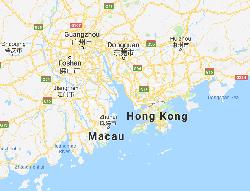
Wong Shun Leung’s Challenge Matches (Beimo)
October 14, 2018

[ Wong Shun Leung ] “told me stories about the sufferings [in Hong Kong during WWII]. He had seen many who fought over left-overs found on the street. Some even grabbed food directly from children’s months only to be kicked and punched to death by the people around. The crippled … simply starved to death helplessly on the street.”
Kim Man Au Yeung, Wong Shun Leung Through My Eyes
Wong Shun Leung was born in June 8th, 1935. In 1931, the Imperial Japanese military perpetrated was later called the “Manchurian Incident,” in which a Japanese officer sabotaged one of their own railways (not really doing any significant damage). The Japanese blamed the incident on Chinese “dissidents” (the 1930’s equivalent of terrorists) and used this staged event as a pretext to invade and occupy Manchuria (a big chunk of Northeast China). In 1937, the Japanese invaded the rest of mainland China and soon controlled the country all the way down to the Shenzen River, opposite Hong Kong. “Hong Kong” is a region which includes both the island of Hong Kong and a big section of the Kowloon peninsula.
 Hong Kong’s population swelled with refugees escaping the Japanese. The population nearly doubled from 879,000 in 1931 to 1.6 million by 1941. The Japanese finally got around to attacking Hong Kong itself, then a British territory, on the 8th of December, 1941, the day after they attacked Pearl Harbor. Hong Kong surrendered by the 26th. From 1941 to 1945 (when the Japanese unilaterally surrendered after the atomic bombs dropped on Hiroshima and Nagasaki), Hong Kong was under martial law. This was the Hong Kong in which Wong Shun Leung grew up, as noted in Kim Man Au Yeung’s new book,
Wong Shun Leung through My Eyes.
Hong Kong’s population swelled with refugees escaping the Japanese. The population nearly doubled from 879,000 in 1931 to 1.6 million by 1941. The Japanese finally got around to attacking Hong Kong itself, then a British territory, on the 8th of December, 1941, the day after they attacked Pearl Harbor. Hong Kong surrendered by the 26th. From 1941 to 1945 (when the Japanese unilaterally surrendered after the atomic bombs dropped on Hiroshima and Nagasaki), Hong Kong was under martial law. This was the Hong Kong in which Wong Shun Leung grew up, as noted in Kim Man Au Yeung’s new book,
Wong Shun Leung through My Eyes.
This aspect of the book really opened my eyes to some of the possible motivations behind the hardcore training of Wong and others of his era. He grew up in a nightmare. Its hard to imagine how bad it was, but as an example, there was one incident referred to as the St. Stephen’s Massacre. St. Stephen’s was a British-style university (Ip Man went there). At this time, it was being used as a hospital. Japanese soldiers broke in, raped and killed the nurses and killed all the patients. I’d heard about the Japanese atrocities on the mainland (Nanking for instance) but had not heard about what went on in Hong Kong. Curious, I looked around and found various sources (such as this page ) detailing the events of the occupation. Basically, there was an untold number of rapes and murders (and who knows what else).
This was the backdrop of Wong Shun Leung’s childhood. I was motivated to learn to fight by incidents that are pretty small in comparison to any of this. Imagine the levels of insecurity and rage you would feel as a little kid surrounded by the rape and pillaging of your city!
How is the book otherwise?
Its seems like a (not very good) English translation of a Chinese text. But this very characteristic makes it interesting in its own particular way. The phrasing and the allusions to culture are an interesting peek into the “Chinese mind,” and Chinese culture of the time. There is a infusion of Confucianism and Taoism into the everyday that is very illuminating, if you like me are interested in the mindset and ways of thinking behind the development of Wing Chun. As a Western non-Chinese speaker, I can probably never know certain nuances about Wing Chun, but this book helps bridge the gap a bit.
Also, this book is probably the best examination of Wong Shun Leung’s Beimo (challenge fights) we’ll ever get. Kim Man Au Yeung has been able to combine his first hand accounts with media accounts (the fights were covered in the newspapers) to present a detailed picture of Wong Shun Leung’s “career” as a challenge fighter. In many cases, we get a blow by blow description, as well as an understanding of the social practices surrounding these fights. We sometimes forget the deep cultural differences between the West and the Chinese – these accounts really allow you to see some of these differences, such as in the formalities of the fights stemming from the clan-like school groups and other sorts of family ties.